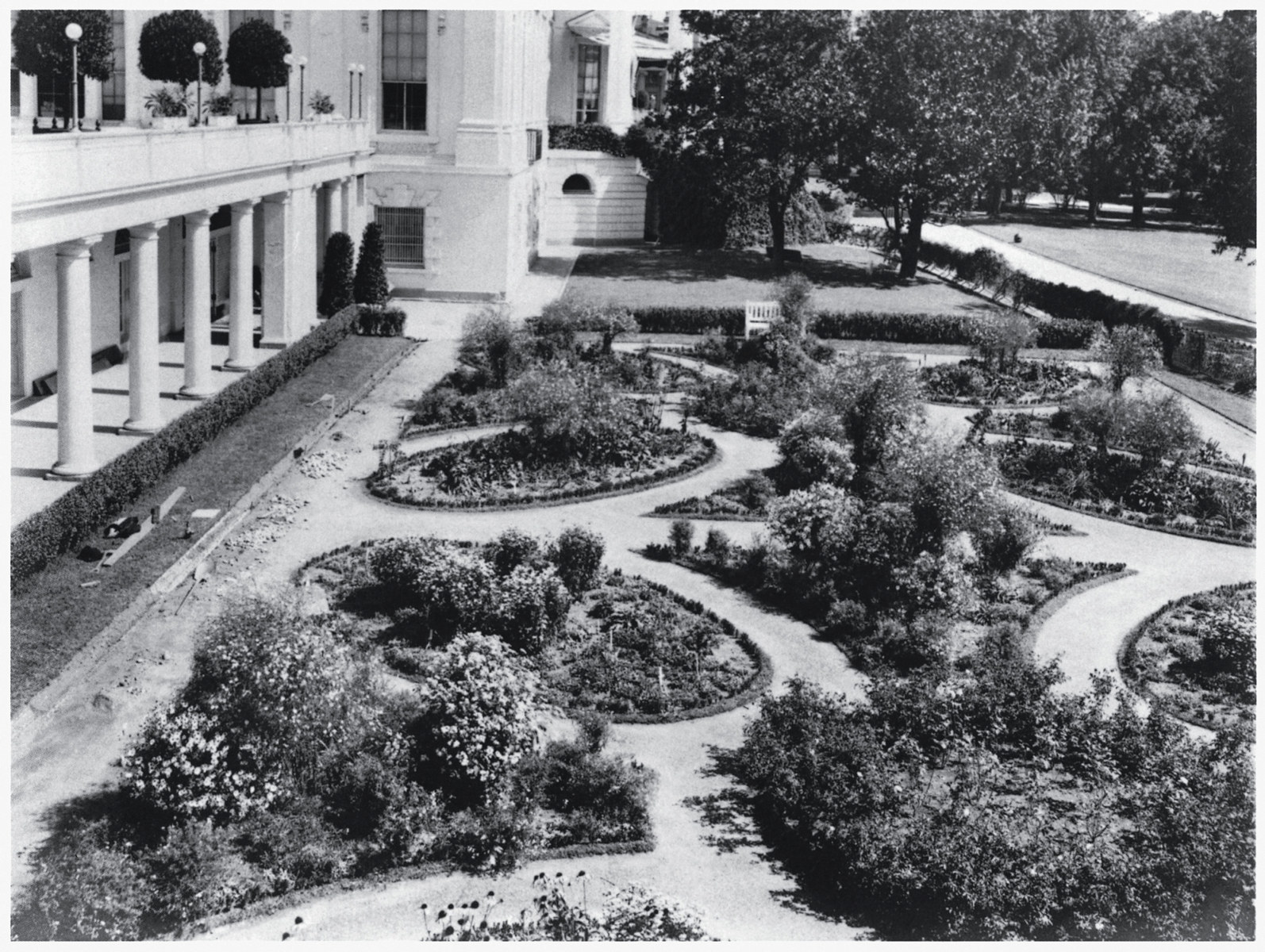Collection The First Ladies
Biographies & Portraits
Main Content
A Succession of Ideas
How Long? 2 minutes

A photograph of the Rose Garden, taken from the roof above the Oval Office in June 2011 during a State Dinner in honor of Chancellor Angela Merkel of Germany.
In the early days of gardening at the White House, the gardens were fenced away to facilitate care and watering. A large vegetable garden was planted on the west side, with a water pump nearby. There were ornamental plants, but there is no record of an ornamental garden until Andrew Jackson’s was built on the east side about 1833, centered upon an orangery that provided medicinal fruit through the winter. While the written information on Jackson’s garden is extensive, only one illustration exists, an accidental view captured in a construction shot of the Treasury Building during the 1850s. This extension to Treasury led to demolition of the garden in 1856.
President Ulysses S. Grant’s old army aide, the irascible General Orville Babcock, took charge of improving the grounds and built along the south side of the house narrow flower gardens pierced by winding gravel paths. These survived, vine choked, until Theodore Roosevelt’s renovations of 1902 and Edith Roosevelt’s design of a “colonial” garden where the present Rose Garden now stands.

First Lady Edith Roosevelt’s “colonial” garden, ca. 1902-1903. The paisley shaped flower beds framed by low boxwood abounded in old-fashioned flowers, Johnny-jumpups, daisies, and wildflowers that Mrs. Roosevelt and her friends gathered on walks in the country.
Abby Gunn Baker Papers, The White House
The Rose Garden as planted in 1913 according to First Lady Ellen Wilson's modifications of plans by George Burnap.
Library of CongressThe first Mrs. Woodrow Wilson, Ellen Axson Wilson, demolished the colonial garden in 1913 and with the noted landscape architect George Burnap, who was very much involved in Washington’s “city beautiful” movement, designed a wholly modern rose garden, with low, sharply tailored privet hedges outlining beds of roses and tall-hedged allées flanking ceremonial walks. On the west, where an enlarged West Wing would one day contain the Oval Office we know today, Mrs. Wilson built a lattice wall, a triage upon which to hang hers and her friends paintings during receptions and garden parties. It was this garden, or rather the modified remains of this Wilson garden, that was in place when Rachel Lambert Mellon designed today’s Rose Garden for President John F. Kennedy.
Biographies & Portraits
It is hard to imagine that it was something as casual as a lunch conversation between a newly elected president...
Since the first cherry blossom planting in 1912 by First Lady Helen Herron Taft, Washingtonians have celebrated the scenic beauty and...
The White House Grounds began as approximately 85 acres of land chosen by George Washington and was refined and cultivated by...
Since 1878, American presidents and their families have celebrated Easter Monday by hosting an "egg roll" party. Held on the South...
For more than one hundred years, White House Social Secretaries have demonstrated a profound knowledge of protocol and society in...
Kathryn Cramer Brownell
NUMBERS 1 THROUGH 6 (COLLECTION I) WHITE HOUSE HISTORY • NUMBER 1 1 — Foreword by Melvin M. Payne 5 — President Kennedy’s Rose Garden by Rachel Lambert...
Elaine Rice Bachmann
April 29, 1876 – President Ulysses S. Grant signed legislation protecting the public turf and grounds of the U.S. Capitol; egg rolling wa...
The white marble walls of the Ground Floor corridor complement the vaulted ceiling arching gracefully overhead. Architect James Hoban installed...
Families taking up residence at the White House since the Theodore Roosevelt administration have encountered the public's insatiable appetite for...